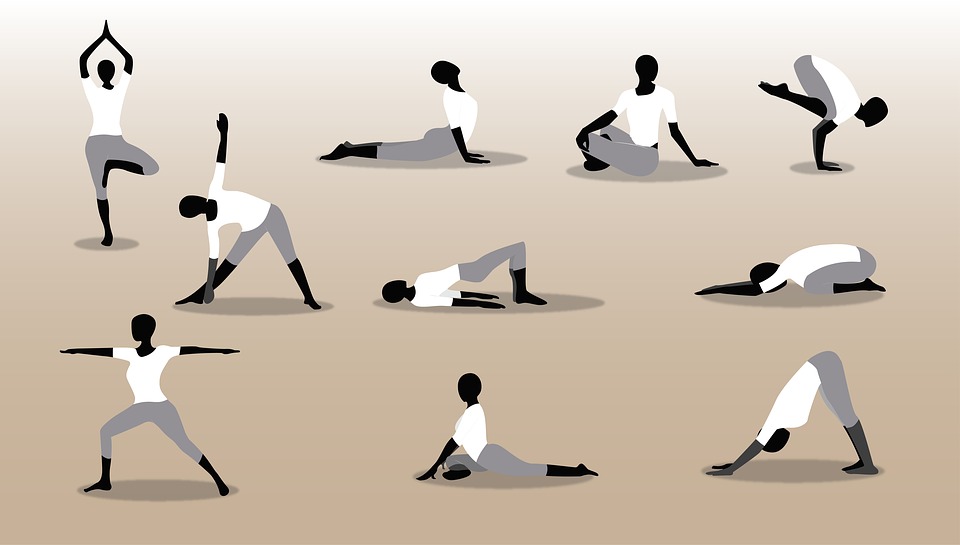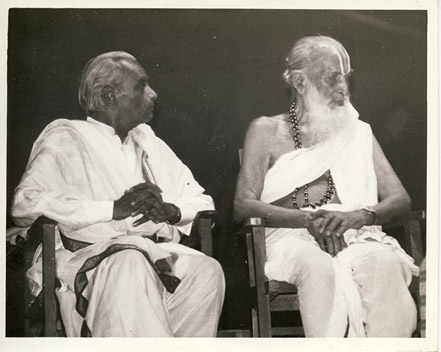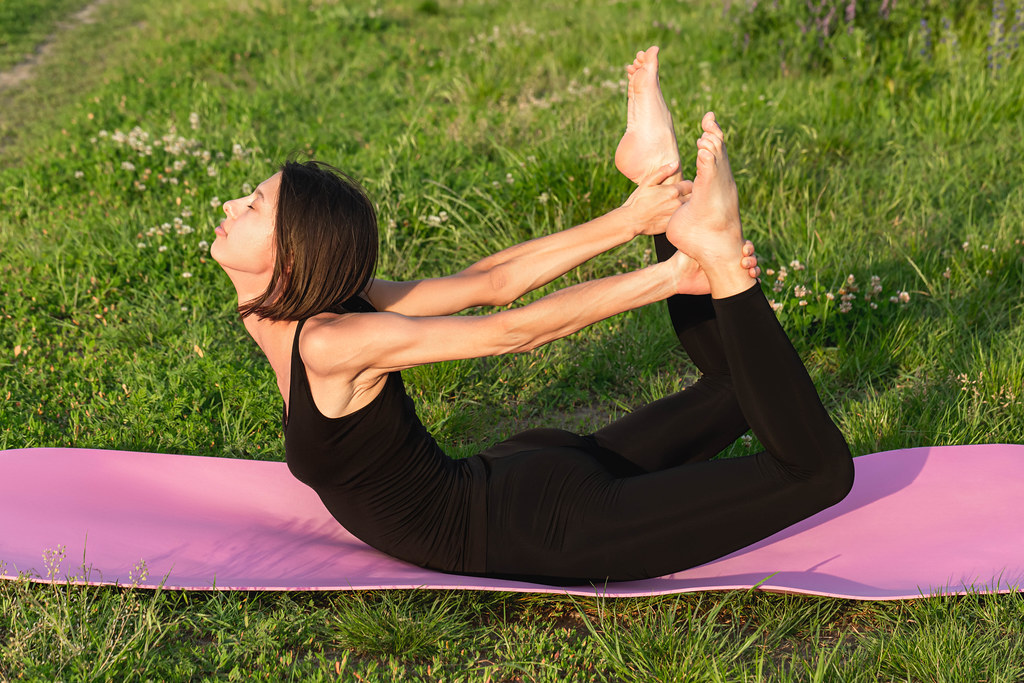
The research into yoga and arthritis has yielded mixed results. The researchers found that yoga induced fewer depressive symptoms and higher positive affect, and there was no significant difference in the SF36 MCS. Adjusting for age, the results were almost identical. The results, despite the lack of evidence linking yoga to arthritis, are promising and warrant further investigation. In this article we will explore the health benefits of yoga and discuss the power and vinyasa benefits.
Restorative yoga
Research on Restorative Yoga for Arthritis has demonstrated several benefits. Yoga can not only improve physical function and flexibility but also relieve joint pain. A Restorative Yoga program for beginners was created as part of a scholarly study. This reduced disability and pain. Five people with arthritis participated in the study. The participants' responses were evaluated based on physical function, pain levels, quality of life, and overall well-being. Despite positive results the statistical significance of this study is unknown.

Vinyasa
Many people have wondered about the link between Vinyasa yoga and arthritis. During a Vinyasa yoga class, you move from one asana to another in a flowing, dynamic fashion. As you move, you also build muscle and connect it with the breath. Vinyasa Yoga can help with joint pain and improve joint function when done properly. Vinyasa is a good option for arthritis. Although there is no direct evidence, it may be beneficial for both.
Power yoga
Power yoga and arthritis are closely related. People with arthritis can benefit from the ancient exercise and have a better quality of their lives. Power yoga classes are fast-paced and can involve prolonged holding poses. Restorative Yoga classes are slower and more focused on relaxation and stretching. The goal is to relax the body and improve its overall quality of life, while restorative yoga is appropriate for people with mild to moderate arthritis.
Vinyasa-style classes
Yoga, especially vinyasa style classes for arthritis, has many benefits. Vinyasa is a flowing sequence of poses linked together. It's more aerobic than other yoga styles and can increase joint range of motion and reduce pain. It focuses on stress reduction and relaxation through breathing exercises. Vinyasa-style yoga classes for arthritis offer an additional benefit: they target joint pain.

Lyengar yoga
The use props in yoga has been associated with increased mobility and joint flexibility in people suffering from arthritis. This alternative therapy might be a great option for those with limited movement due rheumatoid. Props are an important part Iyengar's yoga method. This yoga style emphasizes the importance and correct alignment of every pose. Students in an IY class typically hold the poses for a few minutes. Students may be assisted by a teacher to achieve the ideal pose.
FAQ
What is the best workout routine to build muscle?
There are two major exercises that you should do when you want to build muscle mass. These are isolation exercises and compound moves. While isolating exercises target specific muscles, compound movements are designed to focus on multiple muscle groups at once.
It is important to do exercises that work all of your major muscles groups. This ensures that each session is challenging.
MyFitnessPal can help you keep track of your activity. It can track everything from calories burnt to weight lifting. You can also create customized meal plans based upon your goals.
What is the best 7-day workout program?
A seven-day exercise program should consist of three days per week of cardiovascular training (running, biking, swimming), two strength exercises (using free weights, weight machines), and one flexibility/core workout (yoga, Pilates). Each activity should be performed at least once each week. Each session should not take more than 45 mins.
Cardiovascular Exercise: Running/Biking/Swimming
You should aim to get at least 60 mins of cardio exercise per week. Try to do 75 minutes per semaine for the best results. Cardio exercise can stimulate blood flow and increase muscle growth.
Strength Training
Cardio exercises focus on the heart and lungs while strength training targets muscles and bones. Strength training helps you burn calories even while resting.
Flexibility and Core Workouts
Core and flexibility exercises are great ways of strengthening your whole body. Both yoga or Pilates are great options.
Eggs good for men
The egg contains all the nutrients required by the human body. It also helps maintain strong bones, a healthy heart and lungs, and stable blood pressure.
Eggs are a good source of protein and vitamins A, B12, D, E K, calcium, phosphorus iron, zinc copper, magnesium selenium and even riboflavin.
The egg yolk contains high levels of cholesterol. It does not contain any saturated fat. Eggs are low in saturated fat compared to other foods.
They are also low-calorie and high in sodium. You can make them in any way you like. You can fry, poach, scramble, boil, hard-boil, and bake them.
They are very healthy and simple to make.
At least two whole eggs should be consumed each day. You can add eggs to your diet if you don't like eating eggs.
Our bodies need eggs to provide the essential nutrients they require. Try adding them to your daily diet today.
Which exercise is best for men
The answer will depend on what you are searching for. Cardio exercises are great for anyone looking to lose weight.
For those who want to gain muscle mass, strength training will be a better option, as it increases your lean body mass.
Both types of exercise are proven to be beneficial if you're looking to improve your overall health.
If you're looking to get fit fast, I recommend doing HIIT or sprint interval training. This type training will help you quickly lose fat by increasing your metabolism. It can also increase your endurance, so that you can train even when fatigued.
What foods should I avoid when trying lose weight?
Avoid trans fats. Trans fats increase LDL (the harmful) cholesterol and lower HDL (the good).
Trans fats are found in deep-fried foods, fast food, packaged baked goods, snack cakes, and other processed foods.
These unhealthy fats cause inflammation which leads to heart disease, diabetes, and other health problems.
Artificial sweeteners are also to be avoided. Artificial sweeteners may increase your chance of getting cancer.
They are found in everything, from soft drinks to chewing tobacco to candy bars. They can also be found in other foods like meat, poultry, and eggs.
Artificial sweeteners can be saccharin or cyclamate, sucralose, sorbitol or aspartame.
The American Heart Association suggests that you avoid these chemicals as they can cause DNA damage in your cells.
How do I build muscle quickly?
The best way to quickly build muscle is to eat healthy and exercise regularly.
The best time to work out is early morning when you are fresh and ready for action!
You should try exercises such as squats, bench presses, push-ups, etc.
Take a look at different weight training options and make sure to drink plenty of fluids throughout the day.
Statistics
- By John Thompson Take a whopping 38% off a set of PowerBlock Pros. (menshealth.com)
- According to the American Heart Association, blood pressure should be checked at least once every two years, beginning at age 20. (my.clevelandclinic.org)
- The PRS enabled risk stratification for overall prostate cancer and lethal disease with a four-fold difference between men in the highest and lowest quartiles (HR, 4.32; 95% confidence interval [CI], 3.16-5.89). (pubmed.ncbi.nlm.nih.gov)
- Cardmembers earn 5% Back at Amazon.com with a Prime Credit Card. (amazon.com)
- 10 pounds in a month is likely during a lean bulking phase, especially for beginners. (muscleandstrength.com)
External Links
How To
What nutrients does a man need daily?
Healthy growth and development of men requires healthy nutrition. The body needs vitamins, minerals as well as proteins, carbohydrates and fats.
Males also require specific nutrients at certain times of the day. To give you an example, the body uses energy it receives from food to make hormones and antibodies. When you wake up, your body uses protein to repair damaged tissue and build muscles.
Your body burns fat at night and stores it as energy as glycogen. Your body requires fewer calories, but still needs enough nutrients. You can have a snack at night if you feel hungry.
When you work out, you need adequate levels of carbs and protein to fuel your muscles. Muscle soreness can occur if you work out hard.
To prevent this, you must consume carbs and protein within 2 hours of training. Your body will use stored glycogen to produce glucose for energy.
Additionally, it is important to eat protein right away after your workouts are over. This prevents the breakdown of muscle tissue that occurs while you sleep.
Your body makes lactic acid when you are doing intense physical activities. Lactic acid builds up in the bloodstream and causes fatigue. You can avoid this by eating carbohydrates-rich foods like fruits and veggies.
Carbohydrates provide energy for your body to recover after strenuous exercise.
You may also want to include lean meats and fish, as well as yogurt, cheese, yogurt, beans and nuts in your diet.
These foods all contain high-quality proteins. Protein promotes muscle growth and repairs damaged tissues. It provides amino acids that your body needs in order to produce sexhormones and testosterone.
Good skin, hair, and joint health requires adequate dietary fats. Healthy men need between 20% - 35% of the total caloric intake to be fat.
Fat is good for your heart and helps you fight cancer. It keeps your brain healthy and functioning well.
Vegetable oils, such as olive oil, sunflower oil or corn oil, soybean oil and peanut oil, can supply most of the fats you require.
These oils are high in monounsaturated fatty acids (MUFAs). MUFAs lower cholesterol and decrease inflammation. They protect cells against damage from free radicals.
Saturated fats (SFAs) are found mostly in animal products like meat, dairy products, and butter. SFAs increase LDL ("bad") cholesterol, and increase triglycerides. They promote weight gain as well as belly fat.
Plant-based fats such as vegetable oils, seeds, nuts and grains contain polyunsaturated (PUFAs). PUFAs improve cardiovascular function and decrease inflammation. They are also good for controlling blood sugar and cholesterol.
Erectile dysfunction can often be a problem for men who have low HDL ("good") levels of cholesterol. The consumption of saturated fats raises bad cholesterol which in turn lowers good cholesterol.
Men who eat large quantities of red meats or pork may develop prostate problems. When cooked at high temperatures, nitrates can be converted to nitrosamines. These compounds can cause cancer.
Many processed meats are high in nitrites, and other dangerous chemicals. They should be avoided.
The American Heart Association recommends eating no more than 2 servings of red meat per week. Instead, choose poultry, fish, legumes, tofu, whole grain bread, and cereals.